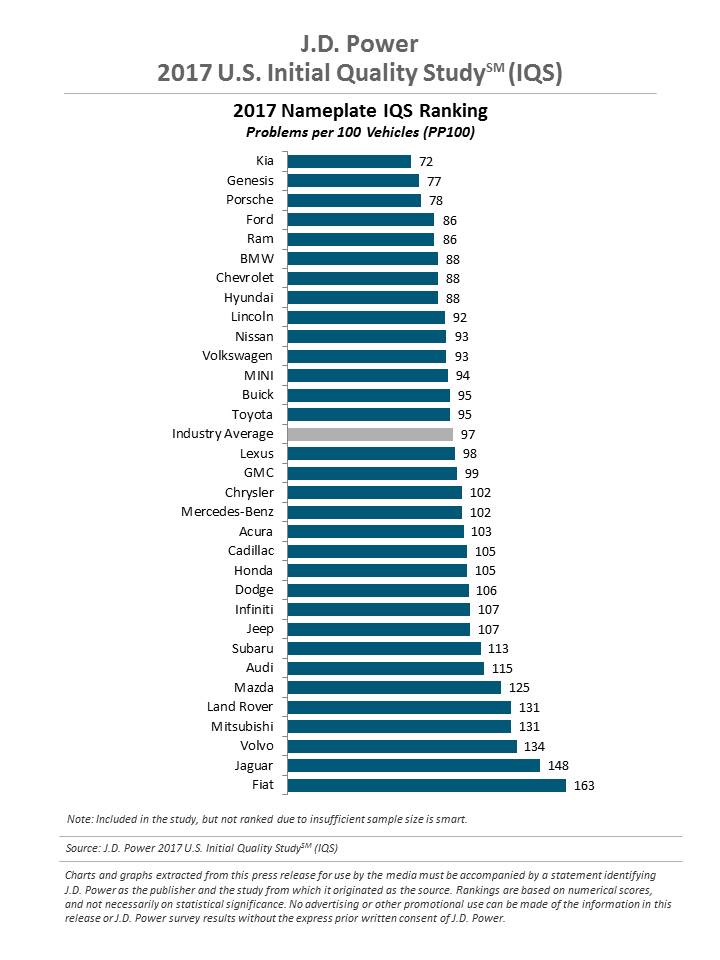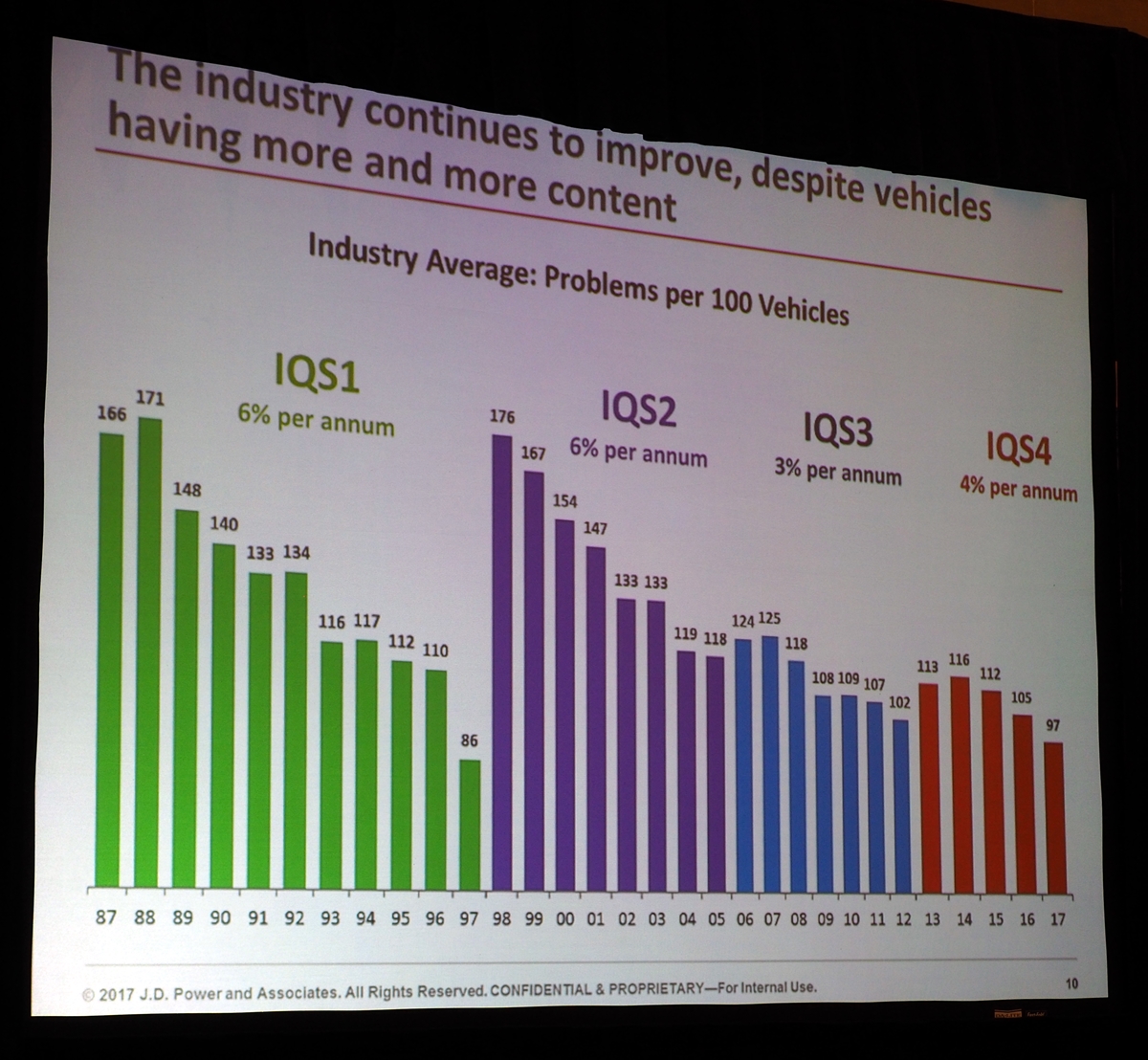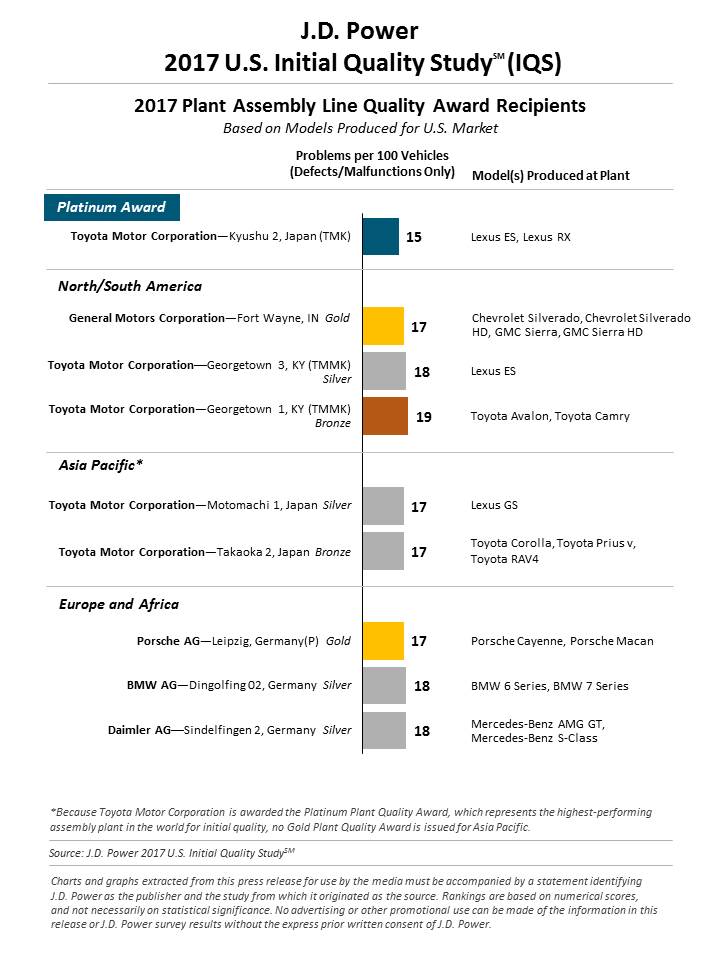J.D. Power presented the results of its 31st annual Initial Quality Study (IQS) today at the Detroit-based Automotive Press Association. For the second year in a row domestic brands scored better than the imports, though Hyundai-Kia did best of all. Lexus, which used to have the top score, for the first time ranked below the average. Most other Japanese nameplates were also below average. Subaru and Mazda (both popular with TrueDelta’s members) ranked near the bottom. Should you now be most worried when buying a Japanese car? Not really, but to understand why you’ve got to understand what the IQS measures.
For the IQS J.D. Power surveys owners after they’ve had their cars for 90 days–hence the “initial” before quality. This isn’t a severe limitation, as there’s a strong correlation between initial quality scores and those on a separate survey covering the third year of ownership. (And beyond the third year? J.D. Power collects no data on how reliability cars are after the warranty ends.)
Anything car owners consider to be a problem counts as a problem. Even if the problem involves a third-party app or a non-compliant cell phone that won’t link up, it counts. Such problems probably aren’t a large percentage of the total. More of a potential methodological weakness: this approach opens the door wide for subjectivity, and car owners’ perceptions vary greatly. (Consumer Reports shares this weakness, compounding it by asking participants to only report problems they considered serious.)
If the above were the only limitations to the IQS, the rankings probably would still serve as a good indicator of reliability. But, as I’ve noted repeatedly in the past, IQS combines two very different types of problems: repairable mechanical issues and non-repaired design issues (especially ease of use). This wasn’t always the case, but as mechanical reliability improved J.D. Power redesigned the survey three times, each time broadening the scope of what counts as a problem. This year about two-thirds of all problems were the latter, non-repairable sort, with infotainment systems (including Bluetooth and voice recognition) the chief culprits.
Japanese cars continue to have the best mechanical reliability. But their infotainment systems too often are difficult to use. For example, Honda’s and Acura’s systems often include two separate screens, but too few physical knobs, while Lexus has been failing to make a mouse-like interface work. The systems in Hyundais and Kias tend to be much simpler. Meanwhile, Detroit-based manufacturers have improved their infotainment systems to the point that they’re often the easiest to use. Ford’s score improved a massive 16 points this year because it replaced the problematic MyFord Touch system with an all-new, much more easily operated SYNC 3. Even Cadillac’s CUE infotainment system, the worst in Detroit, has improved.
With the usability of infotainment systems finally improving (for most auto makers anyway), collision avoidance and autonomous driving systems could become a larger concern. Slightly more problems were reported with such systems this year than last year, partly because more cars are being purchased with such systems. It’s unclear what proportion of these problems are also a matter of usability. I almost always turn lane departure warning systems off because most are far more annoying than helpful.
Dave Sargent, who oversees the survey at J.D. Power, acknowledged that the domestics now outscore the imports due to their more usable infotainment systems rather than their mechanical reliability, though the latter has also improved. J.D. Power bases assembly plant rankings on mechanical reliability alone, Here Toyota plants won five of the nine awards. Three went to European Plants and one went to a domestic brand plant (for GM’s large pickups).
A final caveat: most brands score within a dozen points of the average. Only a few outliers score well below the average.
The IQS would be far more useful if it provided two separate sets of scores rather than combined scores. As is, it’s not possible to tell whether low scores are due to reliability or to usability. More often than not reported problems involve the latter. Luckily, it’s easier to avoid design issues than mechanical issues: just take thorough test drives before deciding which car to buy.


